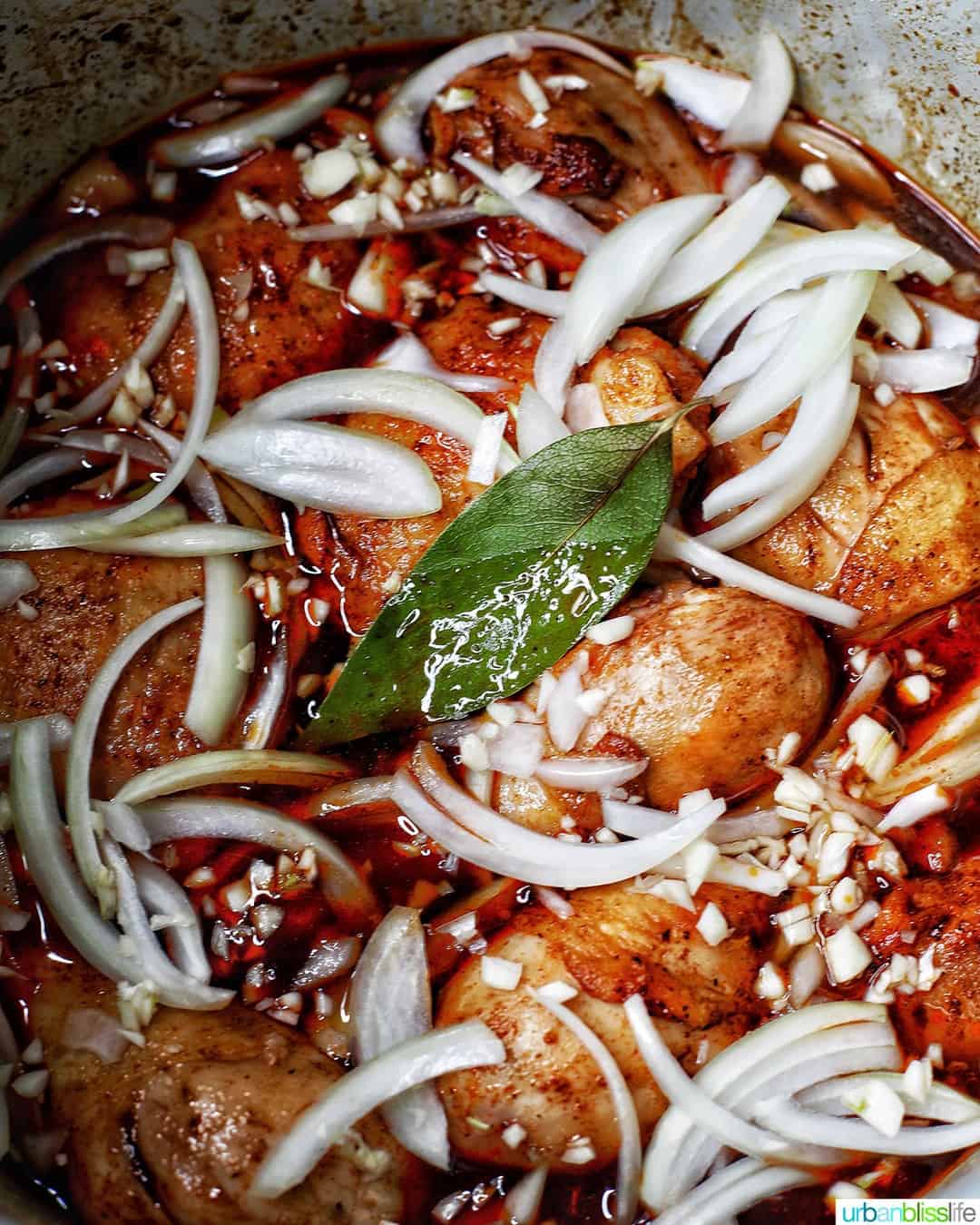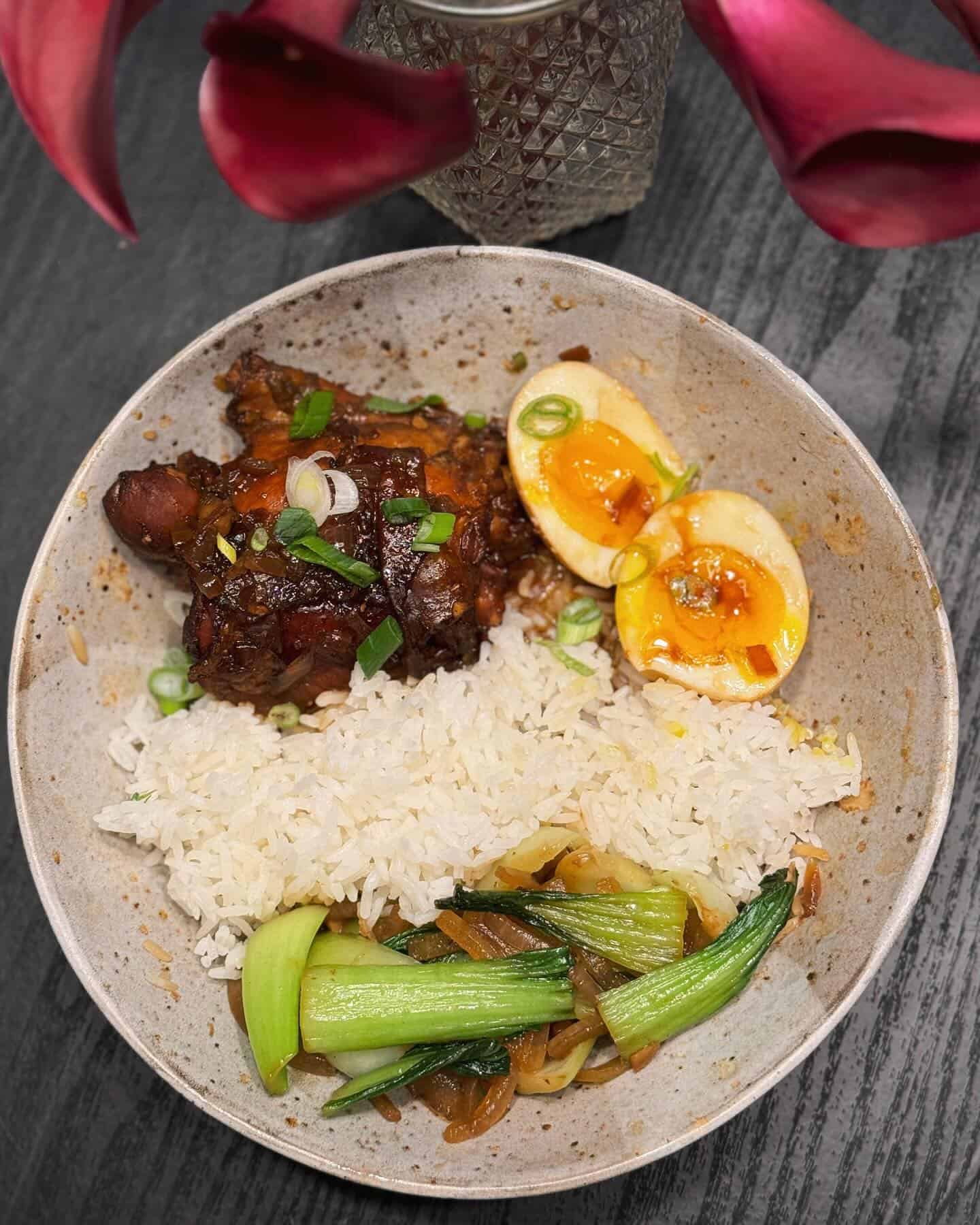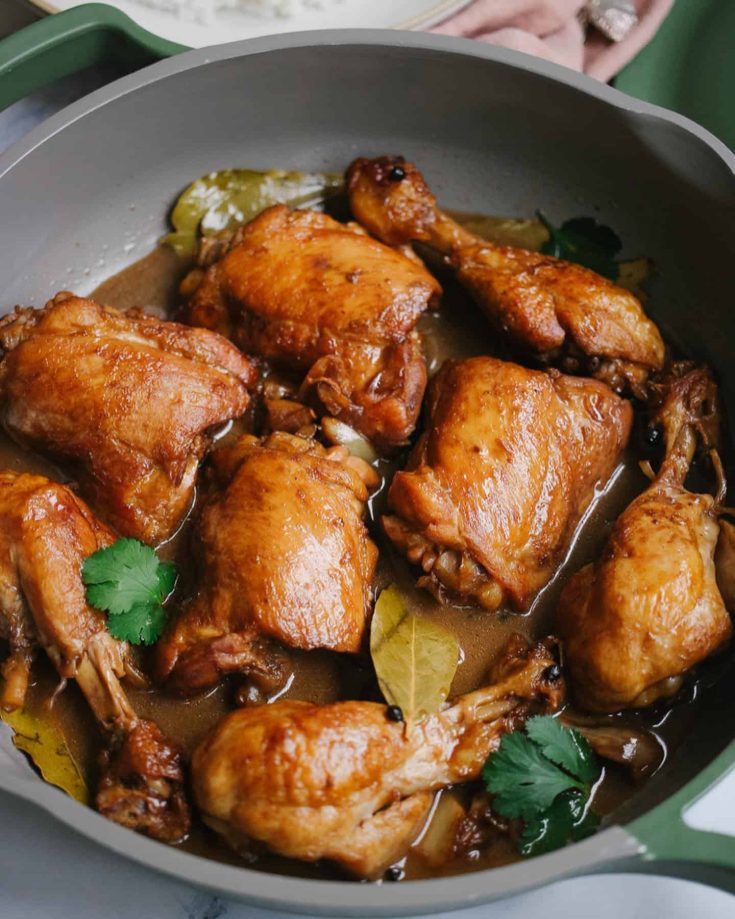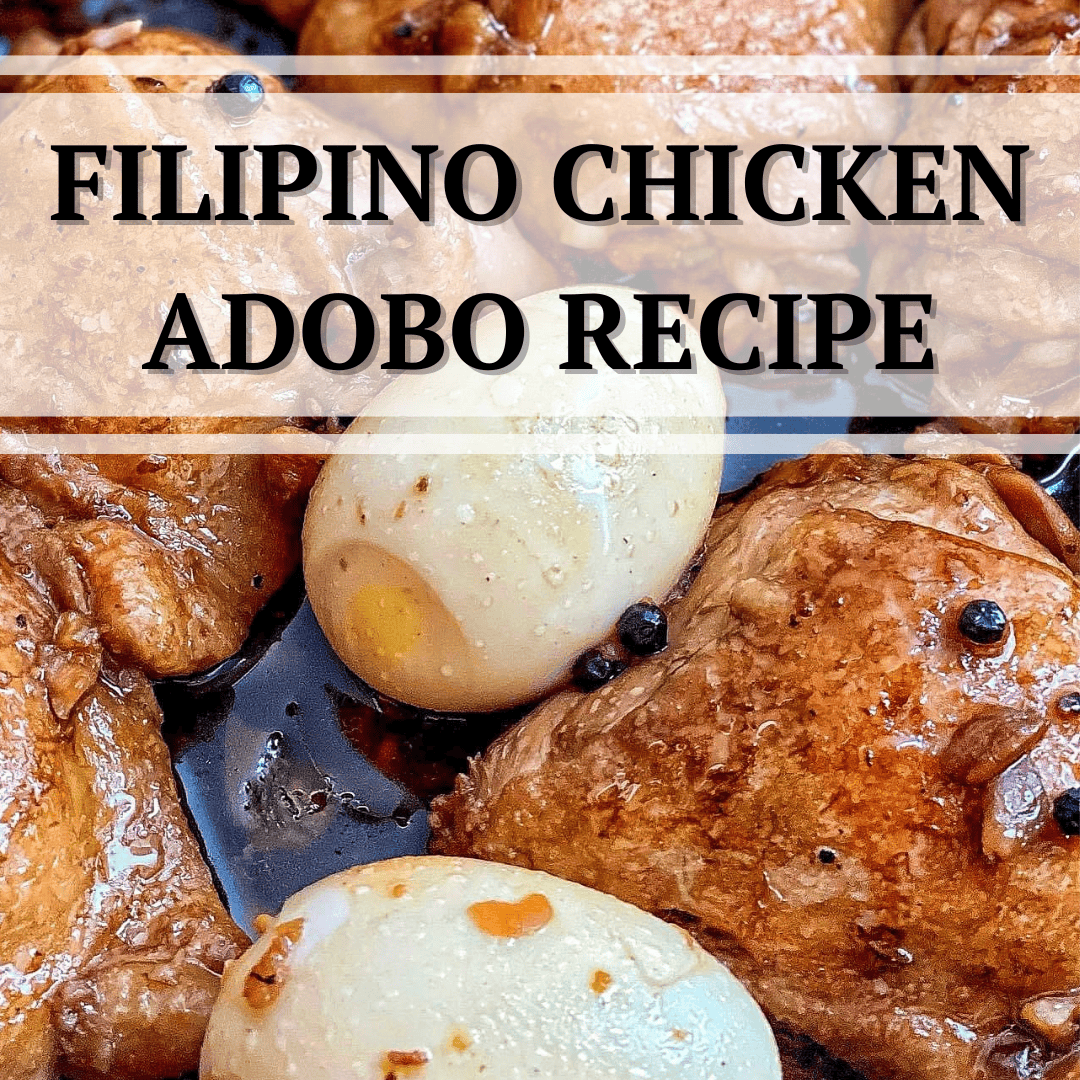Chicken adobo is probably one of the most quintessential Filipino dishes out there, and for a very good reason. It’s a dish that feels comforting no matter when you eat it—lunch, dinner, or straight from the fridge.
I’m Filipino, so I may be a bit biased when I say this, but adobo is such a perfectly balanced dish—it’s bold, tangy, and full of umami, and a bit sweet. The best thing about it is how ridiculously easy it is to make.
Once you’ve got your chicken and pantry staples—vinegar, soy sauce, garlic, and bay leaves—the rest practically takes care of itself.
Served over any kind of rice, it’s the kind of meal that feels like home.
Tips for Cooking and Prepping

There are hundreds of ways to cook adobo, but these small details make a big difference.
Brown the chicken first. I always take a few minutes to sear the chicken pieces before adding the liquids. That golden crust adds flavor and depth that simmering alone can’t.
Use oyster sauce. It’s not traditional, but a spoonful adds body and savory sweetness that balances the vinegar.
Use whole black peppercorns. Skip the cracked ones—they tend to make the dish spicier and can overpower the flavor. Whole peppercorns add just the right amount of warmth, and they’re easy to pick out later (because no one wants to bite into one mid-adobo bite!).
Let the vinegar cook off. Don’t stir right after adding vinegar — give it a few minutes to boil uncovered. It softens the acidity and gives a smoother, rounder taste.
Let the sauce thicken. As it simmers, the sauce reduces and turns glossy, clinging beautifully to the chicken. That’s when you know it’s ready.

And yes, use sugar, even just a teaspoon or two. It doesn’t make the dish sweet; it just balances everything perfectly.
Recipe Variations and Substitutions

Every Filipino household makes adobo differently, and that’s part of what makes it so special. You can tweak it based on what you have or what you prefer.
For a deeper, more complex flavor, add a splash of coconut milk—that turns it into adobo sa gata, rich and creamy. If you don’t have soy sauce, tamari works well for gluten-free diets.
You can also use pork, tofu, or even mushrooms instead of chicken. Just adjust the simmer time depending on the protein. For vegetarians, tofu or tempeh soaks up the sauce beautifully.
Potatoes are also a staple addition to this recipe. As the potatoes soften, their starch breaks down and thickens the sauce, making it cling to the chicken more. Plus, they’re a carb source, so they make the dish really filling.
Storage and Make-Ahead Tips
Adobo actually gets better the next day—the flavors deepen and mellow as it sits. You can refrigerate it for up to four days or freeze it for a month.
When reheating, do it gently over low heat to avoid drying out the chicken. If the sauce thickens too much, add a splash of water to loosen it.
You can make a batch ahead of time and divide it into lunch containers with rice; it reheats perfectly for work or school meals.
What to Serve It With

Traditionally, adobo is served with steamed white rice. The sauce seeps into the grains and ties everything together.
If you want to add something on the side, go with stir-fried green beans, sautéed bok choy, or even pickled vegetables for freshness.
Some people, I included, like topping their bowl with a fried or boiled egg, too, with a drizzle of chili oil for extra kick.
Frequently Asked Questions
Can I make adobo without soy sauce?
Yes, though it’ll taste a little different. You can use tamari or coconut aminos instead—both add that savory note without traditional soy.
Can I make chicken adobo without vinegar?
Vinegar is key to adobo’s flavor, but you can reduce the amount if you prefer it less tangy. Some use lemon juice or calamansi as a milder alternative.
Can I make chicken adobo in an Instant Pot or a slow cooker?
Absolutely. Sear the chicken first using the sauté function, then add everything else and cook on high pressure for about 10 minutes. For a slow cooker, cook on low for 4–5 hours.
Can I make Filipino adobo vegan?
Yes, just swap the chicken for tofu, tempeh, or mushrooms, and use vegetable broth instead of chicken broth. Make sure your oyster sauce is vegan, or replace it with mushroom sauce.
Why does my adobo taste too sour?
That usually happens if the vinegar hasn’t cooked off. Next time, let it boil for a few minutes before stirring so the sharpness mellows. You can also add a pinch of sugar to balance it out.
Filipino Chicken Adobo Recipe

Image credit: @eatwithcarmen_
Ingredients
For the Chicken Adobo
- 2 lbs (900 g) chicken thighs or drumsticks
- 2 tablespoons oil (neutral or canola)
- 6 cloves garlic, smashed
- 1 small onion, sliced
- 1/3 cup soy sauce
- 1/4 cup white vinegar
- 1 tablespoon oyster sauce
- 1 tablespoon brown sugar
- 1 cup water or chicken broth
- 2 bay leaves
- 1 teaspoon black peppercorns
Optional Add-Ins
- 1–2 boiled eggs (for serving)
- Steamed or stir-fried vegetables
- Rice, for serving
Instructions
- Brown the chicken. Heat oil in a pot over medium heat. Sear chicken pieces on all sides until lightly browned, then set aside.
- Build the base. In the same pot, add garlic and sauté until fragrant. Return chicken, then pour in soy sauce, vinegar, oyster sauce, and sugar.
- Simmer slowly. Add bay leaves, peppercorns, and water. Bring to a boil, then reduce to a simmer and cook for 25–30 minutes, uncovered, until chicken is tender.
- Thicken the sauce. Let it reduce until glossy and slightly sticky, stirring occasionally. Adjust seasoning if needed.
- Serve and enjoy. Spoon over hot rice, drizzle with extra sauce, and serve with veggies or boiled egg if desired.
Featured image credit: @foodphotography_bydonski

